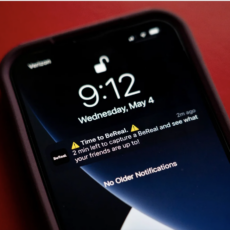Crafting the Golden Touch for Luxury Jewellery Brands
Fine jewellery, like all luxury verticals, is undergoing a transformation thanks to the shifting identity codes of the flexible customer. Across search, social and paid media, rich stories are the new capital brands need to focus on.
It’s still the same book, just a new chapter for the jewellery industry. Attitudes towards consumption have had a makeover and new rituals are emerging.
In jewellery, some are breaking with tradition as Gen Z perceived the value of an engagement ring somewhere between $100-$999. Others are spinning a modern twist on established norms — women buying themselves jewellery more than ever before while the percentage of men accessorising has risen steeply.
Both a contributor and result of these shifts and twists is the power of storytelling and perceived value. Jewellery brands are some of the best at writing vivid narratives for their own names and their clientele.
From true tales of modern love to stories of pre-loved pieces or accounts of nature’s beauty, the narratives brands weave around campaigns, collections and individual stones give context to brand-to-customer connection.
These stories begin in branding; in thoughtful positioning and strategy, but they’re strengthened through marketing efforts. To extend that context and connection across every touch point. And when it comes to digital, search, social and paid media are the cornerstones that count.
SEO: Rich Narratives Rank
The first encounter with a luxury jewellery brand does not happen via search.
The audiences that will make meaningful transactions and remain life-long supporters of your brand are not typing “luxury diamond watch” into a search engine. Nor are they prepared to sift through pages of products masquerading as “luxury”, in the hopes of finding something that will provide sufficient cache.
Your audiences are discerning and precise — defining qualities they bring to search.
It’s highly likely that they’ve already encountered the brand via a relative, a friend, an icon, an influencer. Someone with gravitas.
We know this because brand-specific searches tend to outnumber generic ones. Brand names are typically paired with the searcher’s item of choice.

Other times prospective buyers may be more interested in a specific statement piece, perhaps in response to a resonating trend or a desire for a timeless product with heirloom potential.
In these cases, your audiences’ search will be more brand agnostic, but they’ll still be highly specific — expecting to find precisely the piece they have in mind.
3 Actions to Optimise Search for Luxury Jewellery Brands
1. Embellish Your Place on Browsers
Make branded search results your shop window. Own your contribution. Track popular agnostic searches and pivot to meet demand. Capitalise on every component of the results and be highly polished across all verticals.
2. Lean into Trends and Timeless Classics
Luxury brands are not servants of trends. But they don’t ignore them either. They’re your opportunity to grow brand awareness — especially if you’re a leader of the mode. Create rich, discoverable pages for trends as well as your timeless classics, you’ll captivate far more prospects.
3. Tell Stories with Expertise
Solid landing pages — as vital as they are — won’t be enough for ambitious luxury brands when it comes to SEO. You need to tell compelling, authentic stories, backed by context and calibre. Call on your experts to evidence your full experience and why you’re a name to add to their collection.
Social Media: Community Connection
80% of brands say that their community-building efforts have resulted in increased traffic.
As the number one channel for brands to connect with their customers, investing time and resource in fostering an engaged and hyperconnected social media community is incredibly worthwhile.
Connection is the new currency with discerning consumers. Relatability, trust and transparency are differentiators between those who stay permanently bookmarked and those who get lost in the scroll.
Authentic connection breeds loyalty and bottom line growth. Investing in relationships with consumers directly impacts business revenue and strengthens brand-to-customer relationships. When audiences feel connected to brands, more than half of consumers will increase their spending with them specifically and 76% will buy from them over a competitor.
3 Actions to Optimise Social Media for Luxury Jewellery Brands
1. Give Context in Your Content
When it comes to fine jewellery, brands need to justify the quantifiable value and social media is a key opportunity. A strong social media strategy has a narrative at its heart. It gives context to the brand, the product, the service.
Craftsmanship can be highlighted through behind the scenes content — especially for jewellers whose pieces are handmade or intricately detailed. The people behind the brand can be spotlighted, framing their founding spirit or setting out their mission for followers to get behind.
Short-form video performs well here, thanks to the popularity of platforms like Instagram and TikTok, but ultimately the narrative is what will give customers confidence in the value of your products.
2. Bank on Influencers
As mentioned above, many brands won’t be discovered through search but through those they attribute authority to. For digital natives, these figures are often influencers or celebrities given gravitas by their standing in the zeitgeist and pop culture.
For brands looking to bank on them, value alignment is essential. Influencers worth partnering with should be authentic advocates with a genuine following your brand can relate to. Not just anyone with a blue tick.
And as the middle class blossoms globally, more and more people are looking to invest in pieces which bring them both personal pleasure and social capital. Capitalise on influencers’ pre-established communities to tap into audiences who are already seeking these moments of delight and bring them into your brand circle.
3. Let The People Speak
55 percent of consumers trust UGC over other forms of marketing. When users create content for a brand and see it shared by the brand, they feel valued and are likely to engage more with the brand’s content.
By integrating authentic UGC jewellery content, you’re creating advocates for your brand, which in turn reduces marketing costs. On top of this, it gives further context to your value proposition as well as broadening your brand’s overall perception and story.
Paid Media: Buying Into Emotional Resonance
The paid media landscape is fast-changing. New social platform heavyweights coming to the fore while Google and Microsoft lean sharply into machine learning and artificial intelligence within ad accounts.
Many controls have been taken away from advertisers and with bidding models and targeting adjustments being removed, it’s now more important than ever for brands to separate themselves from the competition through a number of means.
Luxury jewellers must make the move from a product mindset to one of experience, bridging channels in a media saturated world to break into new audiences and catalyse initial contact through to loyalty.
3 Actions to Optimise Paid Media for Luxury Jewellery Brands
1. Activate Multiple Touch Points
As evidenced by a recent Google study showing that almost ¾’s of consumers describe themselves as “channel agnostic”, there has never been more of an emphasis on cross-channel paid media strategies.
Brands need to exist across their customers’ entire online experience, with multiple touch points tailored to create a seamless customer journey from initial awareness to conversion and beyond.
2. Personalise As Much As Possible
Enhanced dynamic remarketing tools are now at our fingertips, making it easier than ever to create personalised ads for users across the paid media landscape. Users need to feel like brands know what they want, served with the rights ads at the right time.
From dynamic remarketing ads of previously viewed products to display ads that inexplicably show a product that users have only spoken about but never searched, personalisation tools are becoming incredibly powerful and allow advertisers to maximise ROI while providing real value to prospects.
Ad personalisation is only going to get stronger in 2023, so advertisers need to be ready to adapt to these changes — as well as the implications for user privacy that will come as a result.
3. Use Paid Sensitively
With increased personalisation comes increased awareness of privacy from many consumers. People are very aware of brands collecting data now compared to ten years ago, and so it becomes harder to appear authentic when using consumer data to target audiences.
Despite ongoing movement into a cookieless environment, most consumers are unaware of the difficulties now surrounding targeting which is why it’s so easy for brands to lose customers through insensitive advertising strategies.
To avoid this, prioritise empathy when strategising. Would you really enjoy being hit with a remarketing ad on socials mere seconds after viewing a product on a website? Probably not. As an alternative, many luxury brands are introducing audience-segmentation processes based on time from interaction.
In this model, we create multiple retargeting audiences, with additional qualifiers of time-since-product view. That way we can create ethical remarketing campaigns that will show that product to the user at optimal intervals, ultimately preventing user burnout and the loss of a potential lifelong customer.
Are you a luxury jewellery brand wanting to beat the algorithm, stop the scroll and tailor to your targets? Get in touch via info@diffusion.digital to speak to one of our consultants.




